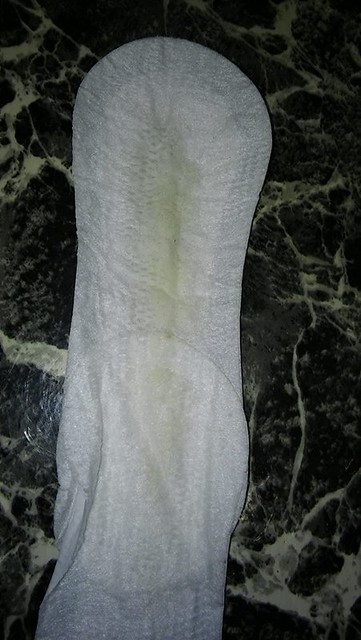
Other factors that can result in PROM and amniotic fluid leak are the following: Mothers who got pregnant 6 months after their last childbirth, or have multiple pregnancies might have a higher risk of PROM and leaking amniotic fluid. Then, if you don’t see any fluid on the pad, that is probably urine. To do this, you should do it like you’re trying to stop urinating. If it is not, then it must be amniotic fluid.Īn additional option is to put on a pad or panty liner and concentrate on holding your pelvic floor muscles tightly. If the fluid is yellow in color, it is most likely urine. Put a sanitary napkin or panty liner in your underwear and observe the fluid that leaks on the pad after 30 minutes to 1 hour.

Vaginal fluid is usually white or yellow in color.Īnother approach to distinguish if it is the amniotic fluid that is leaking is to empty first your bladder. clear, white-flecked, and/or with a mixture of mucus or blood.other liquid and dischargeĪmniotic fluid may present the following qualities: If the liquid is amniotic fluid, it is unlikely to refrain from leaking. Leaking amniotic fluid would feel like a gush of warm liquid or a slow trickle from the vagina. So, it can be difficult to distinguish if fluid is urine, amniotic fluid, or vaginal fluid. Your vaginal tissues also can produce extra fluid to help your baby pass through easily.
#Signs of leaking amniotic fluid vs. discharge full#
Your bladder becomes full quickly, and you would leak urine. While you are pregnant, you can feel that everything likes leaking. As a result, there would be a slow leak of amniotic fluid. In addition, it is also possible that a small hole may develop in the sac. It is possible to break the water balloon, and it will cause a strong gush of fluid (your water breaking). Imagine that your amniotic sac is like a water balloon. Signs and symptoms of leaking amniotic fluid The fluid may also gush out due to the rupturing of the amniotic sac.

If too much liquid starts to leak out, this is an occurrence of oligohydramnios. And if there is blood, it will appear reddish. It may also appear white-flecked as a result of mucus. Sometimes, amniotic fluid can be greenish or brownish when meconium (stool passed by the baby) is there. Generally, it is somehow similar to water, but there can be exceptions. Call your doctor if you have fluid leaking from your vagina.The colorless, amniotic liquid is a clear and odorless, thin liquid. When your bag of waters ( amniotic sac) breaks, amniotic fluid will leak from your vagina. Fluid leaking from the vaginaįluid leaking from the vagina may be a sign that labour is starting. Also, talk with your doctor before you use any non-prescription medicines to treat a yeast infection. This will reduce the chance of spreading a possible infection to your partner. Note: If you have symptoms of a pelvic infection or think you may have an STI, do not have sexual intercourse until you see your doctor. BV or an STI can affect your pregnancy, so be sure to talk with your doctor and get treatment.

You can also have abnormal vaginal discharge with problems such as bacterial vaginosis (BV) or sexually transmitted infections (STIs). If you are pregnant and have abnormal vaginal symptoms, such as vaginal discharge or itching, talk with your doctor about your symptoms before using home treatment measures or non-prescription medicines.Ībnormal vaginal discharge may look like a symptom of a vaginal yeast infection. Topic Overview Abnormal vaginal dischargeĬhanging hormone levels during pregnancy can affect the normal balance of organisms in the vagina.


 0 kommentar(er)
0 kommentar(er)
